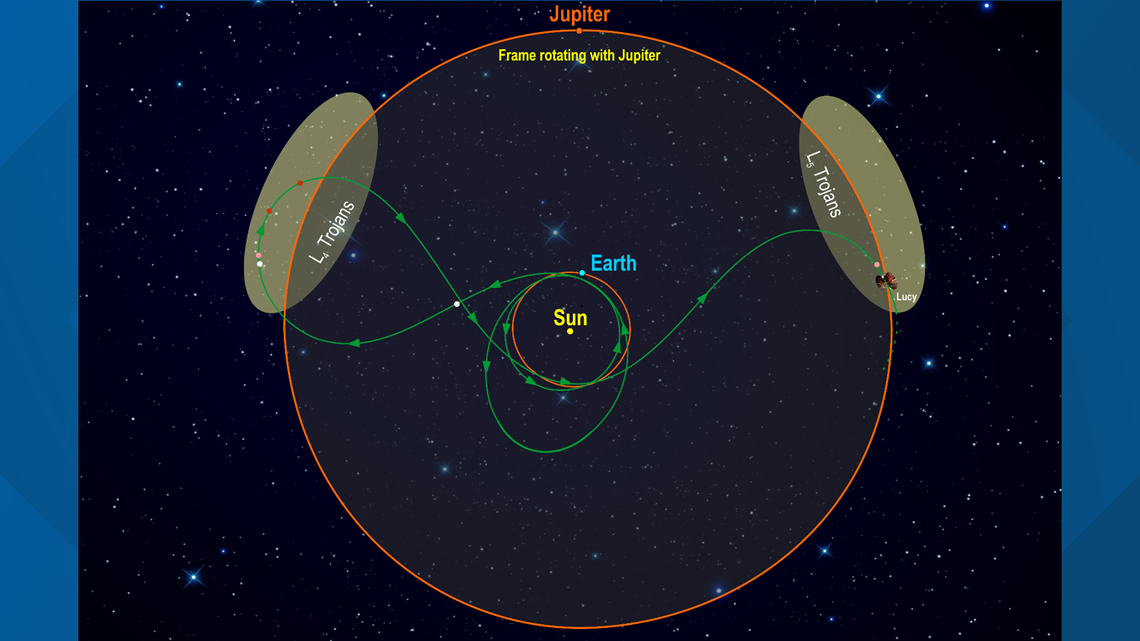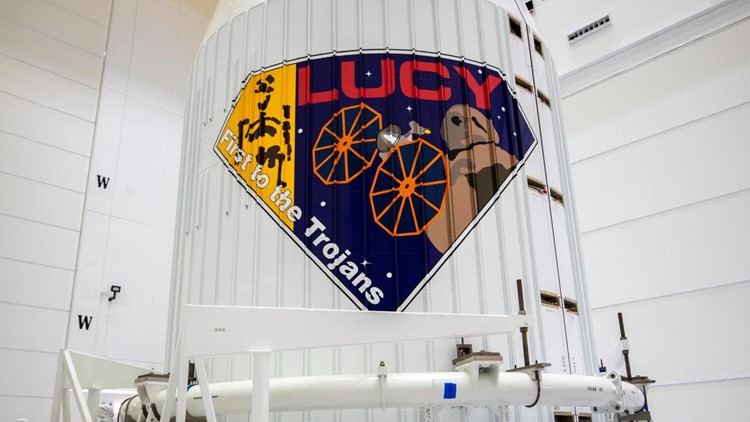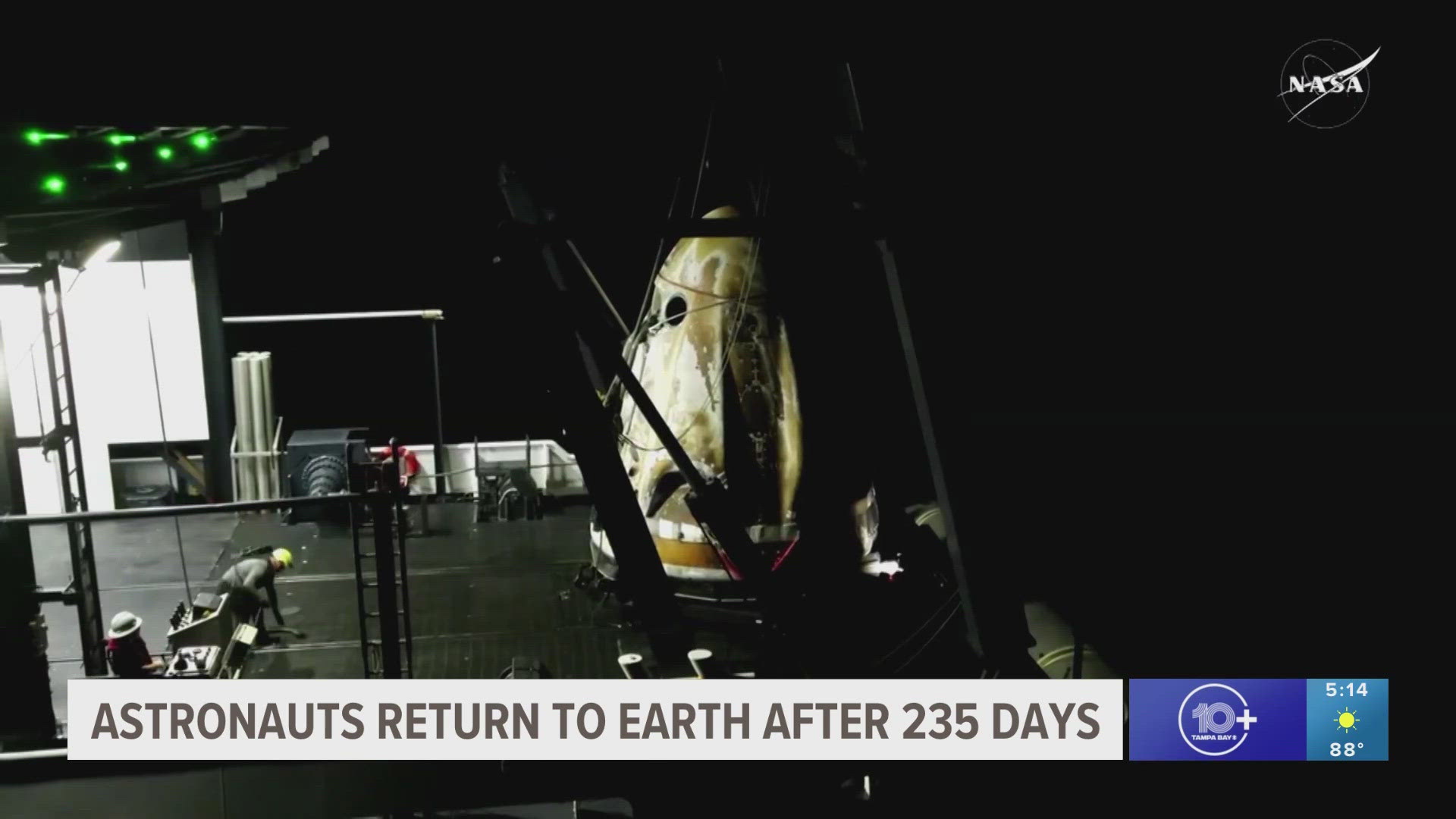CAPE CANAVERAL, Fla — A NASA spacecraft is prepared to go where no spacecraft has gone before — the Trojan asteroids.
"Lucy" is fueled up and ready to begin its 12-year journey exploring the swarms of asteroids that circle the Sun and the fifth planet from it. It will get that chance on Oct. 16 as the spacecraft is carried from Florida's coast to beyond Earth's atmosphere.
The mission could help scientists hone their theories about how our solar system came to be 4.5 billion years ago, according to NASA.
“With Lucy, we’re going to eight never-before-seen asteroids in 12 years with a single spacecraft,” Lucy Project Scientist Tom Statler said. “This is a fantastic opportunity for discovery as we probe into our solar system’s distant past.”


Lucy will be launched on a United Launch Alliance Atlas V 401 rocket at 5:34 a.m. from Space Launch Complex 41. Should weather or any last-minute issues force the launch to scrub, Oct. 17 will serve as the mission's backup date.
While exploring our solar system, Lucy will visit one Main Belt asteroid and seven Trojans that are "remnants of the ancient material" used to form the solar system's outer planets.
"No other space mission in history has been launched to as many different destinations in independent orbits around our sun. Lucy will show us, for the first time, the diversity of the primordial bodies that built the planets," A press release reads.



